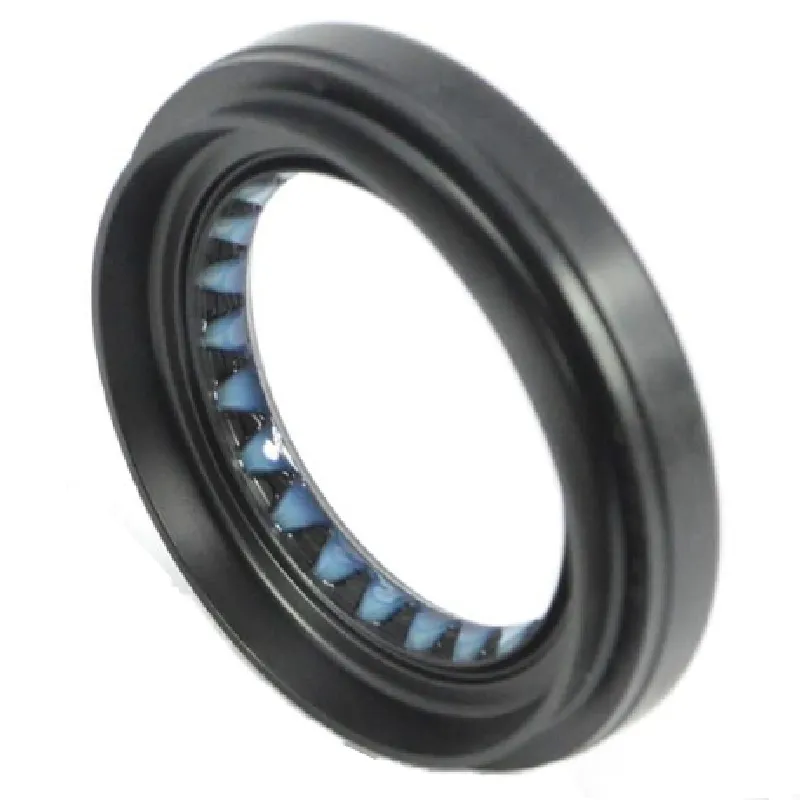Optimizing Gland Shaft Seal Packing for Enhanced Performance and Reliability
Understanding Packing Gland Shaft Seals
Packing gland shaft seals are an essential component in various industrial applications, particularly in pumps, mixers, and other rotary equipment. Their primary purpose is to prevent leakage of fluids along the shaft, ensuring efficient operation and preventing environmental contamination. This article delves into the structure, function, advantages, and maintenance of packing gland shaft seals.
Structure and Composition
A packing gland shaft seal consists of several key components the gland itself, packing material, a follower, and a compression mechanism. The gland is typically a metal or plastic casing that houses the packing material, which can be made from a variety of substances such as PTFE, graphite, or rubber. These materials are chosen for their ability to withstand the operational conditions of temperature, pressure, and the type of fluid being contained.
The follower pushes the packing material against the shaft, creating a seal that minimizes leakage. The compression applied may be adjusted using bolts or screws, which allows for fine-tuning the seal's tightness during operation. This makes packing glands versatile, as they can be adapted to meet specific requirements of different applications.
Functionality
The primary function of a packing gland shaft seal is to prevent the unwanted escape of liquids or gases along the shaft
. In pumps, for instance, sealing is critical to prevent fluid loss, which could not only reduce efficiency but also result in significant operational costs. A proper seal protects sensitive components from corrosion and damage due to exposure to the fluid being handled.As the shaft rotates, the seal compresses against it, creating a barrier. The design allows for some degree of wear, provided that it maintains contact with the shaft. This wear can be mitigated through regular maintenance, and operators can adjust the compression to prolong the life of the seal.
Advantages
packing gland shaft seal

One of the significant advantages of packing gland shaft seals is their simplicity and cost-effectiveness. They are relatively easy to install and maintain, making them an appealing choice for various industries. Unlike mechanical seals, which can be complex and more expensive, packing seals offer a straightforward solution that can be adapted for numerous applications.
Additionally, packing seal systems are robust and can function in demanding environments. They can handle a variety of fluids, including corrosive and high-temperature substances, improving their versatility. With proper material selection, packing glands can last for extended periods, reducing the need for frequent replacements.
Applications
Packing gland shaft seals are widely used across several sectors, including oil and gas, chemicals, water treatment, and food processing. For example, in the food industry, seals made from FDA-approved materials ensure that the products remain uncontaminated. In contrast, in the oil and gas sector, seals must withstand high pressures and temperatures, making material choice crucial for safety and functionality.
Maintenance Best Practices
To achieve optimal performance from packing gland shaft seals, regular maintenance is essential. Operators should periodically check for signs of wear, leakage, or overheating. Tightening or adjusting the compression can help to maintain an effective seal, but it is important to avoid over-tightening, which can cause damage to the packing material and the shaft.
Routine inspections should also include checking for vibrations or unusual noises during operation, which may indicate a failing seal. If leakage persists despite adjustments, replacement of the packing material may be necessary.
Conclusion
Packing gland shaft seals play a critical role in industrial machinery by ensuring the efficient operation of pumps and other rotary equipment. Understanding their structure, functionality, and maintenance can help operators reduce downtime, prevent leaks, and improve overall efficiency. When properly maintained, these seals provide a reliable and cost-effective sealing solution that meets the demands of various applications. By prioritizing effective sealing, industries can protect their machinery, improve performance, and reduce environmental impact.
-
Understanding the Front Main Engine Seal: Purpose, Maintenance, and Installation
News Jul.29,2025
-
Understanding O-Rings and Seal Rings: Types, Applications, and Custom Solutions
News Jul.29,2025
-
Understanding Crankshaft Oil Seals: Rear Seals, Pulley Seals, and Their Role in Engine Integrity
News Jul.29,2025
-
The Importance of Front and Rear Crankshaft Seals in Engine Performance and Oil Management
News Jul.29,2025
-
Crank Oil Seals: Functions, Types, and Cost Considerations in Engine Maintenance
News Jul.29,2025
-
A Comprehensive Guide to O-Rings and Seals: Types, Materials, and Global Applications
News Jul.29,2025
-
Mastering Diesel and Performance Engine Maintenance: A Guide to Critical Oil Gaskets
News Jul.28,2025
Products categories















